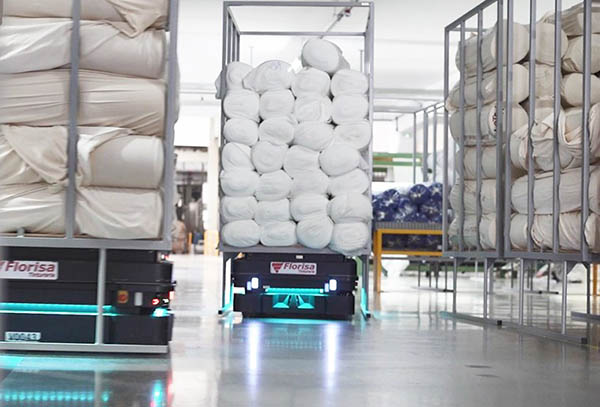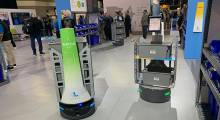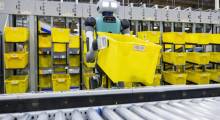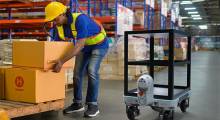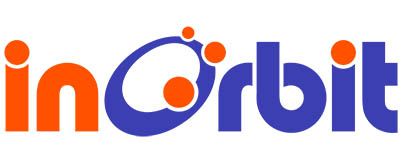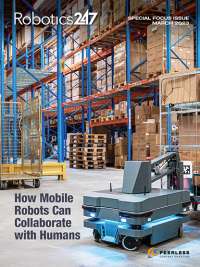Fleet management software continues to evolve, enabling not only better and more efficient operations of the robots themselves, but also the interoperability of robots from different manufacturers. It can also be integrated with enterprise resource planning, warehouse management systems, and other software, though much of this integration is still at an early stage.
“The main differentiator for MiR is the amount of sensors we use on our robot to feed data into a planning algorithm,” said Ed Mullen, vice president of sales for the Americas at Mobile Industrial Robots ApS (MiR).
“We collect five different types of sensor data. When we're trying to navigate around facilities, we can see everything from the floor up to 3 ft. We can see small objects, big objects, and we can see front, left, right and rear of the robot,” he said. “So that gives a very detailed look into what's happening around us.”
The Odense, Denmark-based company’s proprietary Fleet Manager sits on a company network, instructing the robots what tasks or programs to execute, Mullen told Robotics 24/7.
“It also has a 30,000-ft. view of the facility from a map standpoint and can see all the robots where they are positioned on the map, and it can do some path planning and collision avoidance,” he added.
MiR uses an open application programming interface (API) to integrate with SAP or other enterprise resource planning (ERP) systems to pull data from or push commands commands to the MiR fleet management system, explained Mullen.
Florisa uses MiR software for management data
Though MiR doesn’t sell a warehouse management system (WMS), its fleet controller can connect to one. “We've got many, many customers using our fleet tied into their management system, whether it's a warehouse or some type of industrial factory,” said Mullen.
For example, Brazil-based textile firm Florisa has five MiR1000 autonomous mobile robots (AMRs) with a load capacity of 1 ton each operating in a five-story warehouse integrated with four elevators and radio frequency identification (RFID) cages. They are connected to the company’s ERP and WMS systems, and there are 450 receiving positions and 3,000 tissue storage positions.
The MiR1000 robots and MiR Fleet Manager have helped Florisa get more data for analysis, increase productivity and market responsiveness, reduce errors, and ultimately grow profits, said Mullen.
“We're not developing software specifically for the semiconductor market or the pharmaceutical market,” Mullen said. “We're developing software that can be configured to connect into and be used in many different verticals. That’s what makes our robots appealing especially to companies that have different infrastructures.”
The more such systems are integrated, the greater the possibility of movement to “lights-out” facilities, he noted.
Open systems needed for growth
Too much fleet management software is closed, offering only limited interoperability, according to Christian Fritz, founder of Transitive Robotics, which builds full-stack robotic capabilities as a service on an open platform.
“They want to be the one-stop shop that provides you with everything that you might need for your robotics operation,” he said. “These solutions essentially make robotics companies choose between their offerings and building their own in house. There's no middle ground between them.”
But when Fritz was at Savioke, the service robot company chose to use third-party vendors for fleet management software rather than investing the resources that would be needed to develop a proprietary system. A closed third-party product can be a problem if the user outgrows it, he said.
“What’s different about Transitive Robotics is it's open-source, so you can do whatever you want with it,” said Fritz. “Secondly, it provides all of its capabilities as independent [solutions] that you can embed in your own solution.”
Fritz called integration with ERP, warehouse execution systems (WES), and other software “the prime challenge with fleet management systems today.”
“Everyone wants to integrate with so many different systems,” he said. “It’s not only ERP and warehouse management systems; it's also things like Pager Duty for operational concerns or analytics solutions.”
“All of those integrations can be built into our platform, but we don’t have those integrations at this point,” Fritz added. “I know people who are working on that, and the trend is definitely toward integration.”
Fleet management moves into the cloud
Another trend is moving fleet management into the cloud, said Florian Pestoni, co-founder and CEO of Mountain View, Calif.-based InOrbit Inc.
“We help maximize the value of every robot, both working with the robot developers to help them improve the robot and focus on their differentiation, as well as with the end users who are trying to improve their processes, sometimes using different types of robots, sometimes from different vendors,” he said.
Whereas most AMR vendors have some type of fleet management software, most of those systems are “pretty basic,” according to Pestoni. “What we're starting to see is the need for a robot-agnostic way of managing this complexity—especially when you see deployments where you might have different robots carrying out different tasks.”
Initiatives address interoperability standards
Emerging interoperability standards efforts are working to help robotics manufacturers and software providers to work together so that end customers can choose from different types of robots. Examples include the Advanced Robotics for Manufacturing (ARM) Institute's working group and Europe's VDA 5050 specification for autonomous guided vehicles (AGVs).
InOrbit’s cloud platform supports the MassRobotics AMR-Sender protocol, which is designed to help connect robots from different vendors for basic functionality. It was first demonstrated at FedEx's DART center during the Association for Advancing Automation's (A3) AMR & Logistics Conference in October.
“This allows companies that are developing robots to rely on a platform like InOrbit rather than building their own software stack,” said Pestoni. “That saves years of development work.”
He cited Savioke as one company pursuing this strategy and added that deeper integrations between robotic and non-robotic systems such as ERP and WMS will continue to evolve.
Another development that Pestoni expects to start taking hold in 2022 is the concept of robot operations, or RobOps. He is co-founder of the Robot Operations Group (ROG), which is promoting a set of processes, tools, and best practices to guide robot manufacturers, operators, and customers in the design and use of robots.
“RobOps are a vital part of robotics development and integration at scale across industries,” said the organization. “RobOps comprises an executional layer to the larger evolving picture of autonomous robotic integration in our world.”
About the Author
Follow Robotics 24/7 on Linkedin
Article topics
Email Sign Up

